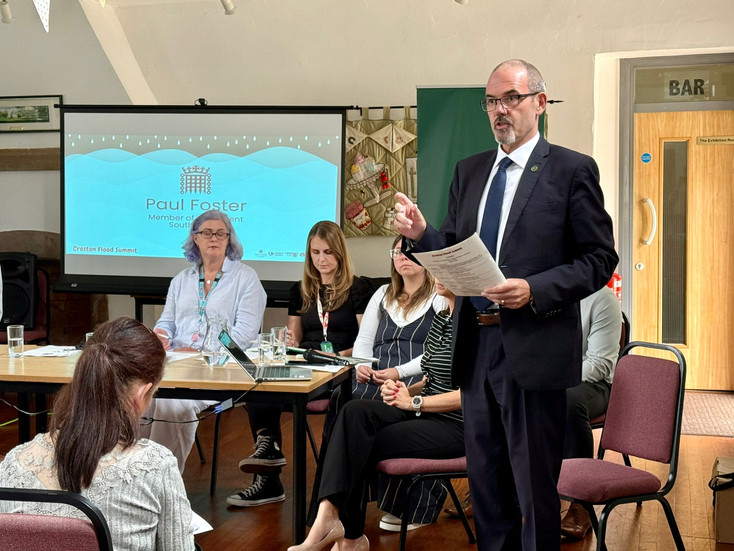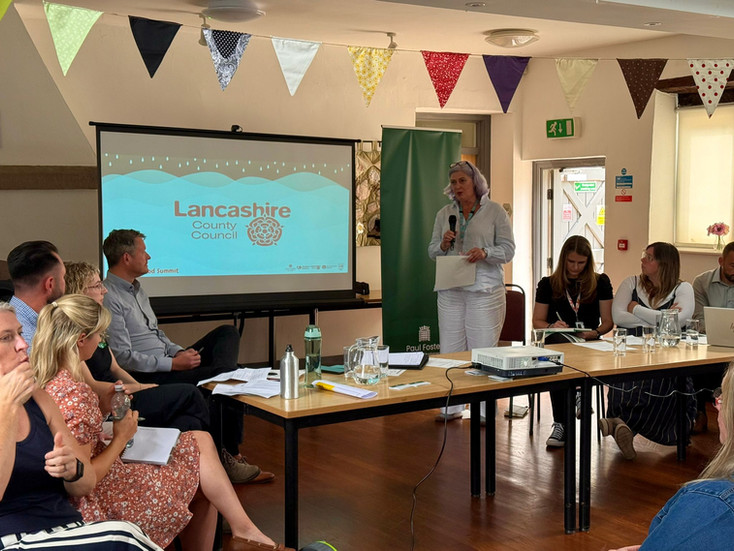Croston Flood Summit
- Paul Foster

- Jul 31
- 3 min read

Thank you to everyone who came along to the Croston Flood Summit last week. I really appreciate local residents taking the time to attend, and I’m grateful to representatives from the Environment Agency, United Utilities, and Lancashire County Council for giving us the opportunity to speak with them face to face.
We had some really important discussions about the causes of the New Year’s Day flooding and, crucially, what more can be done to protect Croston in the future.
I’ll keep standing up for residents, continue pushing for further action, and will provide updates as soon as there is any progress.
After visiting Croston on New Year’s Day and witnessing first-hand the devastation caused by the flooding to people’s homes and the disruption to their families it became a personal priority of mine to ensure everything possible was being done to prevent it from happening again. I began by speaking with the relevant agencies to gather information on what had caused the flooding, what measures were already in place, and, most importantly, what could be done to better protect people’s homes in future.
The flooding that devastated homes in Croston on New Year’s Day was caused by surface water, according to experts from the Environment Agency, United Utilities, and Lancashire County Council.
Representatives from all three agencies spoke at a recent Croston Flood Summit about the causes of the flooding, which followed a period of intense, torrential rain. Residents had raised concerns that the village’s flood defence dam — designed to regulate the flow of the River Yarrow — was not triggered early enough.
The flood storage basin, completed in 2017 as part of a multi-agency partnership involving the Environment Agency, Chorley Council, Lancashire County Council and United Utilities, has since been activated 22 times to protect homes and businesses.
At the summit, officials outlined the actions taken to date and plans for future improvements aimed at reducing the risk of flooding in the village.
On New Year’s Day, the basin recorded its highest ever water levels, successfully protecting properties from the River Yarrow’s floodwaters. However, seven homes were still affected — not by the river, but by overwhelming levels of surface water.
Ian Caunce, Senior Advisor at the Environment Agency, said: “We know the devastating impact flooding can have, which is why protecting people and communities is our top priority. The summit gave us the opportunity to raise awareness of how we operate the flood storage basin, protecting properties from flooding from the River Yarrow. The community also shared with us their knowledge of other sources of flooding that affects the village. We are committed to working with the community in Croston to further assess ways we can reduce the devastating impacts of flooding.”
Joanna Williams, from United Utilities’ wastewater services team in Lancashire, added:“We welcomed the opportunity to be part of a multi-agency focus on flooding in Croston. Flooding is a complex issue, and the importance of a collective partnership approach is paramount. We remain committed to working with other flood risk partners as we deliver a range of projects over the next five years to help improve water quality in the River Yarrow.”
Rachel Crompton, principal Flood Risk officer at Lancashire County Council, said: "It is important for us to share what we know, our research and how we can better manage local flood risks in the future. Our Flood Risk Management team are continuing to investigate and we encourage all property owners to consider how they can help to slow the flow of rainwater in heavy downpours. We are also investigating options for improving the way the emergency pump works at the back of the Old School."
Mr Foster has committed to continuing to work closely with Croston residents and the relevant agencies to explore further measures to mitigate the risk of flooding to homes in the future.
.png)















Comments